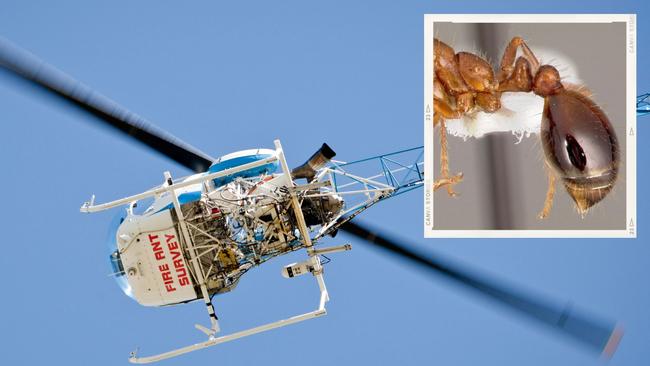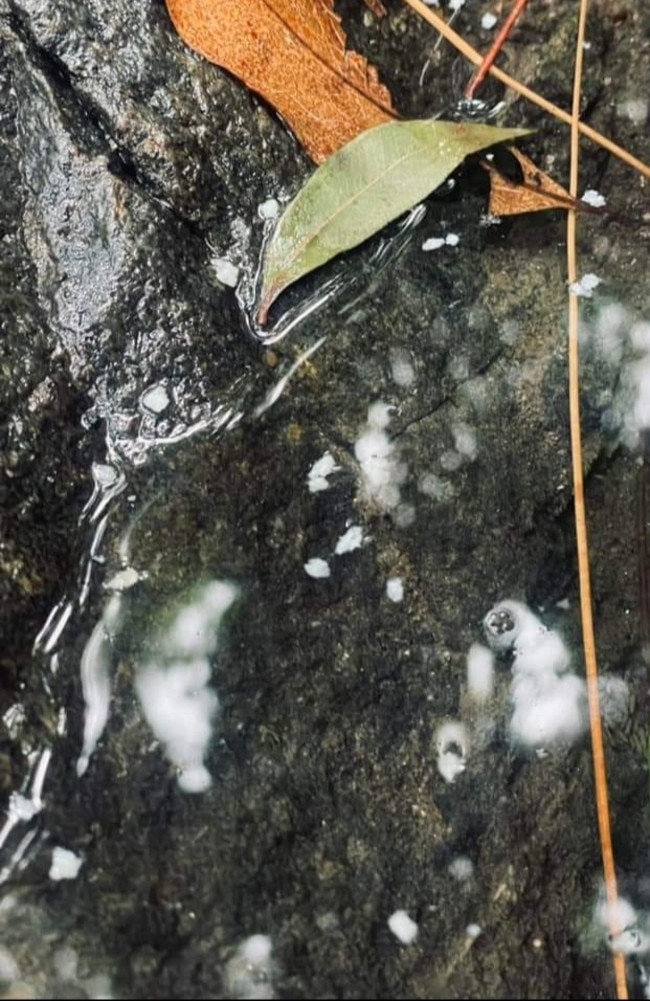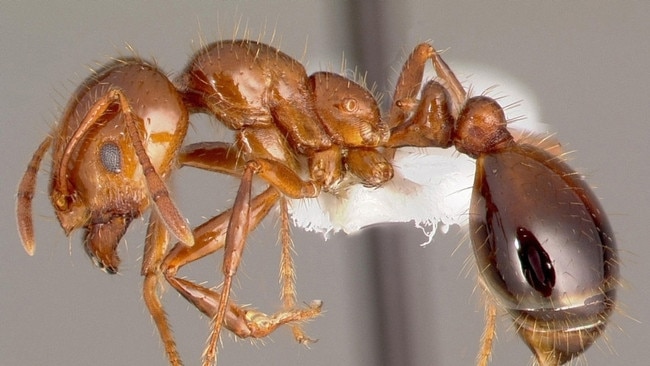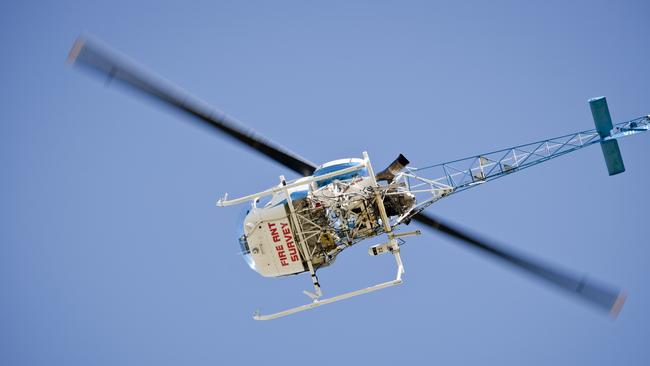Samford Valley residents fear organic farmers’ livelihood at risk after fire ant poison bombardment
A state government official has apologised to more than 100 residents of a semirural suburb near Brisbane after they were hit with a four-day aerial bombardment without warning.

Moreton
Don't miss out on the headlines from Moreton. Followed categories will be added to My News.
Residents in a semirural haven northwest of Brisbane are worried aerial fire ant baiting could have put the livelihood of organic farmers at risk and affected a rare platypus population.
A Biosecurity Queensland official apologised to a packed town hall meeting last week attended by more than 100 Samford Valley locals worried about a four-day aerial baiting program.
One resident, who did not wish to be named, said some people were unaware of the baiting until they heard a helicopter fly over their properties.
She said the area included Dawson Creek, which flowed into the South Pine River and was an important habitat for platypus, crayfish and also a number of organic farms.
“We are worried there will be a repeat of what happened in the Currumbin Valley where organic farmers lost their accreditation because of aerial baiting,’’ she said.
“We want to make it clear we support baiting, but in this area it needs to be done by hand.
“The rules also say these chemicals can’t be used in or around waterways.’’

She said some people had been notified, but others insisted they received no warning text messages or letterbox flyers before the baiting began early last week.
“One landowner has sent off samples to be tested,’’ she said.
“We can’t understand how this happened. They claimed at the town hall meeting that Dawson Creek wasn’t on their (Biosecurity’s) maps, but South Pine River is even marked on Google Maps.
“The regulations also say you can’t use pyriproxyfen (one of the two chemicals used) if rain is forecast and it started raining only six hours after it was dropped.’’
A National Fire Ant Eradication Program spokeswoman conceded pyriproxyfen “may have inadvertently been used in an area containing water bodies’’.

But she said it was unlikely to have had an impact and was no longer being used in the area.
“We continue to investigate treatment containing pyriproxyfen that may have inadvertently been used in an area containing water bodies,’’ she said.
“Information is being gathered about this matter and will be referred to the appropriate regulators and the Department of Environment and Science for further consideration.
“We will actively participate in any regulatory processes required to investigate this matter and prevent reoccurrence.
“Due to the low concentration of treatment product and application rate used by our program, our scientists have indicated that the pyriproxyfen-based treatment is likely to have minimal impact, at most, to the aquatic environment.

“We are working with an independent local company to test and analyse water sample results to determine if there has been any impact on the waterway.’’
She said Biosecurity was also now using treatments containing only S-methoprene exclusively around the Samford area.
“S-methoprene is permitted for use around waterways and streams and is used extensively in mosquito control programs and other common pest control products,’’ she said.
“It is also permitted for use on certified organic properties by the Australian Organic Industry Standards and Certification Council.’’
The spokeswoman said residents had been advised of the program by mail deliveries, social media advertising, phone calls, property visits and at community drop-in centres.
“We appreciate the community alerting us to this situation and we are working diligently to ensure vital eradication activities continue,’’ she said.
Fire ants are considered among the world’s worst invasive species, with bites causing extreme pain or in rare cases even death.
They were first detected in Brisbane in 2001 and despite numerous different approaches to eradicate them, costing hundreds of millions of dollars, they continue to spread.





